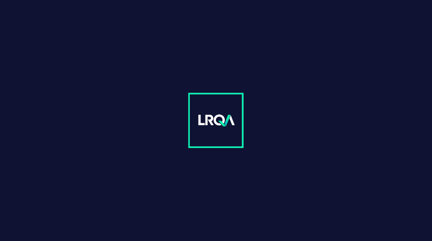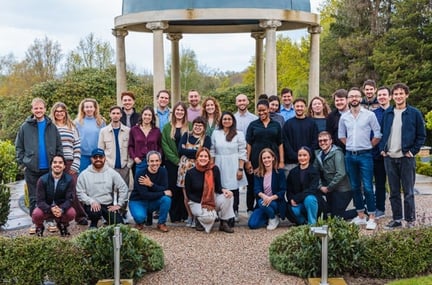From the pandemic to the microchip shortage, recent events have challenged long-established ‘just-in-time’ approaches and prompted businesses to rethink and transform their global supply chain models.
This shift in supply chain dynamics and supply chain assurance has also forced a reassessment of risk mindset in organisations across the world. Uncertainty is here to stay.
For businesses that can adapt to this environment, there is significant potential to create opportunity from this uncertainty. Developing a smarter approach to risk management, through the deployment of digital quality and safety control measures, is the key to avoiding disruption and increasing supply chain agility.
Supply chain disruption is here to stay
The nature of supply chain management has been changed forever. As our response to COVID-19 becomes part of business as usual, it’s becoming clear that the supply chain challenges that have plagued the past couple of years are here to stay also. Whether it’s the energy crisis or the latest geopolitical upheaval, global supply chains are under constant strain. To head-off threats, businesses need to find new ways to gain clear visibility across their operations.
Greater supply chain visibility required
Lean supply chain management is considered a prudent way of doing business, but it’s increasingly looking like a risky option against the backdrop of unpredictable demand and uneven supply. The old model struggles to deliver the flexibility and agility essential to resilience in a fast-changing world.
We are increasingly seeing more modular approaches to sourcing, but these bring their own challenges. New suppliers and untested relationships inherently carry more risk and require a high-level of monitoring – particularly in the short term.
At the same time, the nature of supplier risk has evolved, with ESG performance and cybersecurity placing themselves at the top of every business agenda. These risks are naturally greater for large organisations with more diverse supply chains and more complex technology. The challenge is to maintain visibility in spite of the complexity.
A serendipitous solution
An answer to the challenge of supplier risk has already presented itself in the shape of video-led remote audit and inspection.
Were it not for the pandemic, it would have taken some organisations years to step back from on-site visits and trial new digital approaches to assurance. But, with minimal disruption, businesses were able to transition to remote audit and inspection processes throughout global lockdowns. Due to the fast-paced, real time assurance it enabled, many are now continuing to enjoy the advantages that they bring.
In Q3 2021, the global accreditation organisations IAF and ILAC, along with the standards development organisation ISO, carried out a survey on remote techniques. They found 90% of businesses engaging in remote audit activity agreed that organisations can effectively benefit from remote audits in the future.
The value goes beyond saving time and money with the use of technology. Remote auditing sets the scene for greater visibility on supplier risks new and old – including ESG performance and cybersecurity.
The power of remote, real-time assurance
Almost all (95%) businesses say a reduced environmental footprint is one of the main drivers for wanting more remote assurance activities in the future. Reducing carbon miles travelled is a big tick in the box of the ‘environmental’ element of any ESG strategy.
Remote audits also address many health and safety considerations for both parties, allowing inspection in difficult or unsafe locations more easily, minimising risk. A pressurised chamber at the bottom of the North Sea might, for example, be managed via a video link with the vessel operator. At the same time, interruptions to employees’ regular workflow, and other related inconveniences experienced during an onsite audit, are minimised.
But it’s the real-time assurance where remote auditing really comes into its own and shows its potential for more robust, more efficient, and more productive supply chain management in the long-term. It encourages a shift away from ‘moment in time’ checks, towards continuous monitoring. Instead of just getting a momentary snapshot, businesses have visibility all-year round, a principle which can also be extended to cybersecurity.
This provides a platform for a partnership approach between suppliers and vendors, in which the focus on contractual obligations and box-ticking shifts towards a culture of coaching and collaboration.
Looking to the future
Remote audit techniques are still in their infancy, and video is just the beginning. Drones and the Internet of Things (IoT) are starting to supplement video to provide a clearer and more accurate picture of the supply chain.
Disruptive new technologies will change auditing and inspection practices and force a rethink of the way risk is managed. By 2026, Gartner estimates that more than 75% of commercial supply chain management application vendors will deliver embedded advanced analytics, artificial intelligence and data science.
However, the human element of auditing the supply chain will remain key to it all, dictating the effectiveness of the technology. In the IAF/ILAC/ISO survey, 79% of respondents said they were angling towards a blended (remote and on-site) approach in the future. The time and money saved could be spent on training to upskill suppliers to meet brand standards. Ultimately, auditing the supply chain is no longer limited to traditional observational techniques – technology can take some of the strain.
While there are undoubtedly hurdles to overcome, remote management systems audits and digital assurance practices offer the promise of future-proofed supply chains, with increased real time visibility across suppliers, and more agile methods of achieving quality and control.
Risk Through a New Lens report
Read our Risk Through a News Lens report to learn more about how LRQA’s digitally enabled assurance, inspection, certification and insight teams can help future-proof your business.
Risk Through a New Lens report















